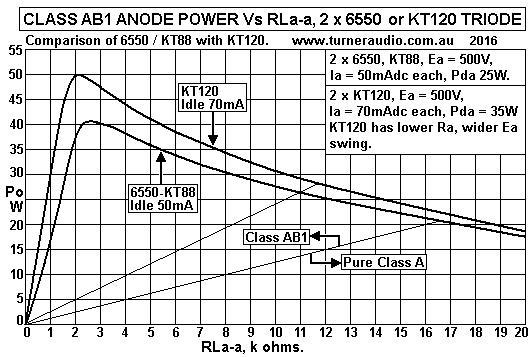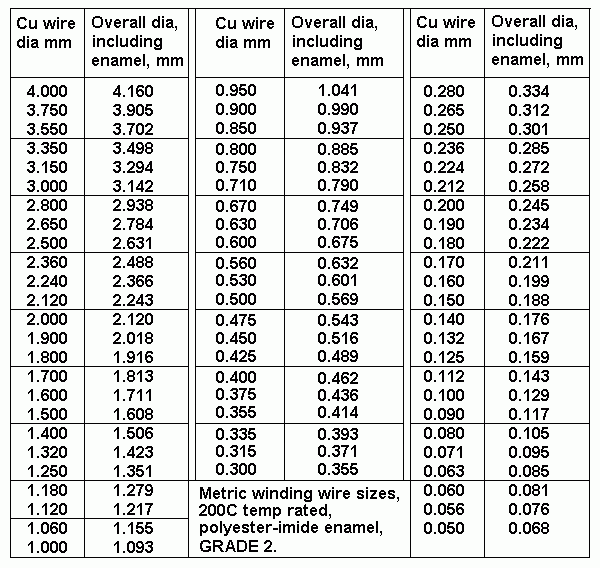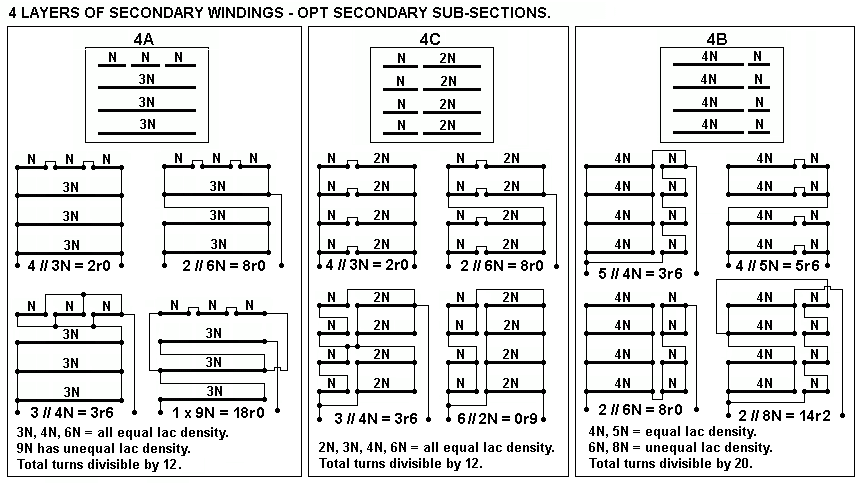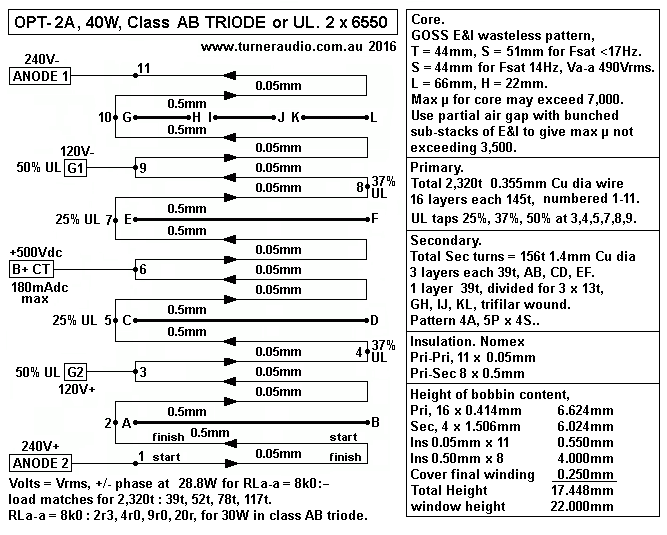

| Table 4 |
Total P layers |
Primary and Secondary layer distribution. |
P&S section pattern |
| 35W to 120W | 14 p | S - 3p - S - 4p - S - 4p - S - 3p - S | 5S + 4P |
| 14p |
2p - S - 3p - S - 4p - S - 3p - S - 2p | 4S + 5P | |
| 16p |
S - 4p - S - 4p - S - 4p - S - 4p - S | 5S + 4P | |
| 16 p | 2p - S - 4p - S - 4p - S - 4p - S - 2p | 4S + 5P | |
| 18p | S - 4p - S - 5p - S - 5p - S - 4p - S |
5S + 4P | |
| 18p |
2p - S - 5p - S - 4p - S - 5p - S - 2p | 4S + 5P | |
| 20 p | S - 5p - S - 5p - S - 5p - S - 5p - S | 5S + 4P | |
| 20p |
2p - S - 5p - S - 6p - S - 5p - S -
2p |
4S + 5P | |
| 22 p | S - 5p - S - 6p - S - 6p - S - 5p - S |
5S + 4P | |
| 22p |
2p - S - 6p - S - 6p - S - 6p - S - 2p | 4S + 5P |
| B+ CT Vdc |
Max Volts peak across insulation. |
Minimum thickness, Polyester sheet. |
| 0V |
100V |
0.05mm |
| 0V |
400V |
0.15mm |
| 300V |
600V |
0.3mm |
| 400V |
800V |
0.4mm |
| 500V |
1,000V |
0.5mm |
| 600V |
1,200V |
0.7mm |
| 800V |
1,600V |
0.9mm |
| 1,000V |
2,000V |
1.2mm |
| 1,200V |
2,400V |
1.5mm |


| 2,320t RLa-a :- |
39t ZR 3,539 |
52t ZR 1,991 |
78t ZR 885 |
117t ZR 393 |
Anode A Po |
Anode AB Po |
Hi-Fi quality |
| 2k0 |
0r6 |
1r0 |
2r3 |
5r1*** |
2.5W |
37W |
Awful |
| 3k0 |
0r8 |
1r5 |
3r3 |
7r6 |
3.4W |
40W |
Awful |
| 4k0 |
1r1 | 2r7 | 4r5*** |
10r2 |
5.0W |
38W |
Awful |
| 6k0 | 1r7 |
4r0 |
6r8 |
15r2 |
7.5W |
34W |
Tolerable |
| 8k0 |
2r3 |
5r3*** |
9r0 | 20r4 |
10W |
30W |
Good |
| 12k0 |
3r4 |
8r0 |
12r0 |
30r5 |
15W |
25W |
Very good |
| 16k0 |
4r5*** | 10r6 |
18r0 |
40r7 |
20W |
21W |
Best |
| 24k0 |
6r8 |
16r0 |
27r1 |
61r1 |
18W |
nil |
Best |
| RL-a-a, 2,320t |
32t ZR 5,256 |
40t ZR 3,364 |
48t ZR 2,336 |
64t ZR 1,314 |
80t ZR 841 |
120t ZR 373 |
Anode A Po |
Anode AB Po |
Hi-Fi quality |
| 2k0 | 0r4 |
0r6 |
0r9 |
1r5 |
2r4 |
5r4 |
2.5W |
37W |
Awful |
| 3k0 | 0r6 |
0r9 |
1r3 |
2r3 |
3r6 |
8r0 |
3.4W |
40W |
Awful |
| 4k0 | 0r8 |
1r2 | 1r7 |
3r0 |
4r8 | 10r7 |
5.0W |
38W |
Awful |
| 6k0 | 1r1 |
1r8 |
2r6 |
4r6 |
7r1 |
16r1 |
7.5W |
34W |
Tolerable |
| 8k0 |
1r5 |
2r4*** |
3r4*** |
6r1*** | 9r5 |
21r4 |
10.0W |
30W |
Good |
| 12k0 | 2r3 |
3r6 |
5r1 |
9r1 |
14r3 |
32r2 |
15W |
25W |
Very Good |
| 16k0 | 3r0 |
4r8 |
6r8 |
12r2 |
19r0 |
42r9 |
20W |
21W |
Best |
| 24k0 | 4k5 | 7r1 |
10r3 |
18r3 |
28r5 |
64r3 |
15W |
nil |
Best |
